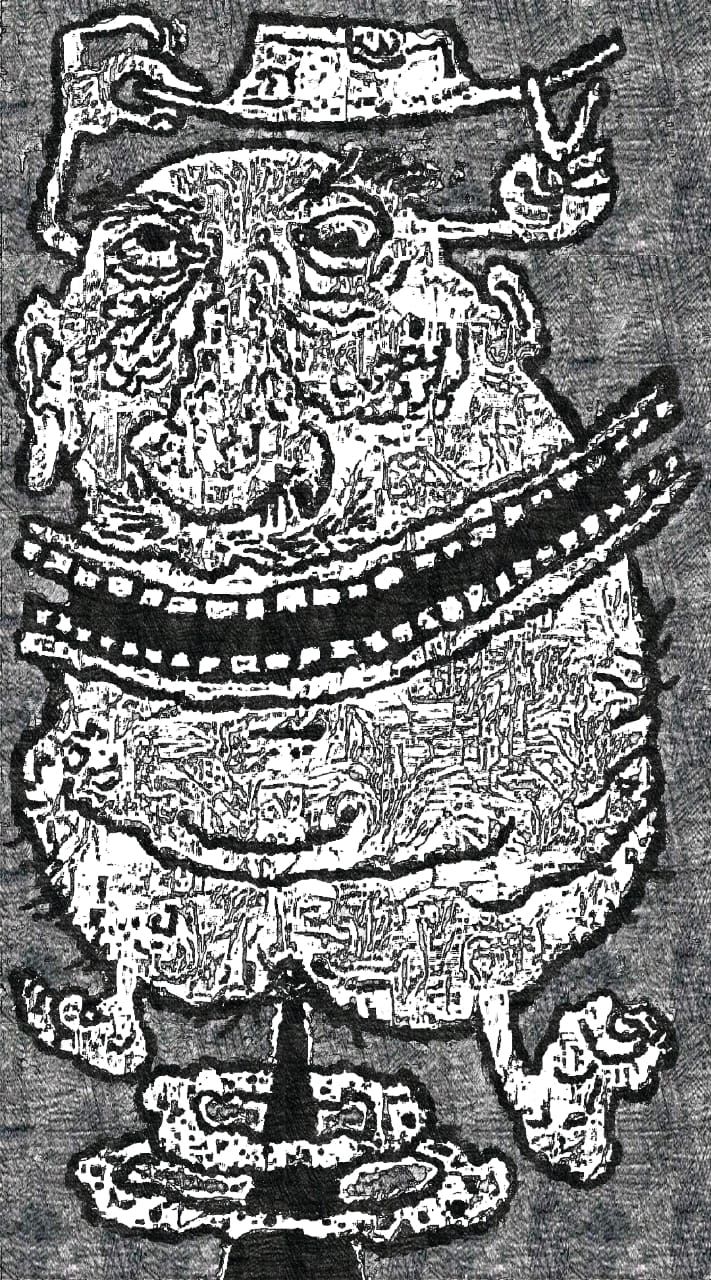Lonely Farts
10/16/2025

Being able to fart without hindrance is one of the important bits of being in the middle of your life, enjoying not having the smell bother you or even frolicking at the indulgence. The sensations of a raw vibrating sphincter, and the various auditory acoustics that can only be mastered in seclusion, are things that you tend to especially appreciate in this age group as a heterosexual Bengali male. Of course, neither the hetero nor the sexual part has anything particularly to do with flatulence of the digestive type I have in mind, but just so that it’s clear, I only ever am attracted to an asshole if it’s of the opposite kind. When I was growing up, somehow I thought pretty girls didn’t take a shit—I couldn’t reconcile a turd coming out of an asshole that had a pretty face attached. Thanks to pornography, I found out all Japanese girls did shit; later, as my porn collection grew, I found out that also German and British girls. Of course, since I then went to the United States of America, I understood both men and women were full of shit. In fact, anything that ate something had to shit — seemed to be necessary for life. Fun fact: AI and the creepy spastic robots that use the current generation of AI don’t shit — as I said, non-life is exempt, although they are metaphorically still full of it because they’ve digested the same internet that I grokked porn to become wise.
Well, at least when I sit depressed, I wallow in my own stink and no one else’s, which is how I like to think of loneliness. It’s better than the constant stink harangue that you have to live through in relationship farts or the endless silent salaried farts in the oppressive concentric remunerative societies we live in. Unlike most of the other ungrateful specimens, I am not apologetic about the constituents of what comes out of me. I have several sophisticated chemical factories that are toiling to sift through the bullshit of pollution and plastic, and fuck knows what else, to keep me alive. No need to get alarmed, though; it’s just innocuous gas I tell you.
The smell is from Hydrogen Sulfide , they tell you, the “rotten egg” flavor in the smell, but there’s more. For instance, methanethiol is the rotten vegetable or garlic, dimethyl sulfide has a sweet, cabbage-like odor, disulfide has a garlic-like odor, and there’s the trisulfide that’s even more garlicky. Add to that ammonia , with its pungent sting, and skatole , a fecal-sweet compound derived from tryptophan breakdown. Indole also joins, aromatic in small doses but fecal at concentration. Short-chain fatty acids like butyric acid contribute a rancid, vomit-like scent. Acetic acid brings a sour tang. Hydrogen and methane are odorless but dominate in volume, followed by nitrogen and carbon dioxide . Oxygen appears in trace amounts. Volatile amines, such as putrescine and cadaverine , offer rotting flesh notes. Sulfate-reducing bacteria generate many of the sulfurous compounds, but microbial fermentation also produces esters and alcohols, with minor contributions from phenol derivatives like cresol , pungent and smoky. Even trace thiophenes and other organosulfur volatiles make appearances, their identities often complex and transient. The bouquet is the sum of dozens of volatiles, each in minute quantities, yet together unmistakable.
The bengali diet adds distinctive volatiles to flatulence, due to its rich use of sulfur-containing and fermentation-prone foods. Frequent use of mustard seeds and mustard oil introduces allyl isothiocyanate , a pungent compound responsible for the sharp, sinus-clearing bite that can be metabolized into volatile sulfur derivatives. Cruciferous vegetables like cabbage, cauliflower, and radish—staples in many Bengali meals—contain glucosinolates that break down into hydrogen sulfide , methanethiol , and other organosulfur volatiles. Lentils, consumed daily in the form of dal, are rich in oligosaccharides like raffinose and stachyose, which gut flora ferment into hydrogen , carbon dioxide , and methane .
Fermented items like shutki (dried fermented fish) contribute to volatile amines such as trimethylamine and cadaverine , which have sharp, fishy, and decaying meat-like odors. The frequent inclusion of garlic and onion introduces a suite of allyl sulfides and related organosulfur compounds, leading to elevated levels of dimethyl sulfide , disulfide , and trisulfide in the gas profile.
Even spices like asafoetida, used in some vegetarian preparations, can enhance sulfurous volatiles due to its ferulic acid and disulfide content. Coconut, turmeric, and fenugreek can each introduce phenolic and terpene-like compounds that modify the character of odor in subtle ways. My depressive deep dives are thus always sulphurous.
It’s the labor of love in a laboratory stuffed with billions of non-me farts that come out as one contribution, my fart, but like everywhere where labor is involved the actual people—numerically and functionally diverse—who do the job are forgotten, and the CEO gets to carry the pomp, in this case poot. The poor underpaid intestinal bacteria, the true proletariat of digestion, toil in methane mines of the colon, fermenting carbohydrates with monastic devotion, and yet who gets the credit? The external sphincter, that smug managerial gatekeeper, timing the release like an orchestra conductor pretending to have composed the symphony.
It’s Marxism in microcosm: means of flatulence production seized by the asshole elite, while the bacterial workforce languishes in darkness, unthanked and ununionized. And what of the olfactory shareholders? They never invested, yet they receive dividends in disgust. In a just world, each fart would come with end credits listing the microbial cast—Bifidobacterium, Lactobacillus, and the unsung Clostridium perfringens—complete with a dedication to the billions who perished producing today’s gas. But capitalism hates transparency; the cloud of truth, like the fart itself, must disperse quickly before anyone can analyze its full chemical signature.